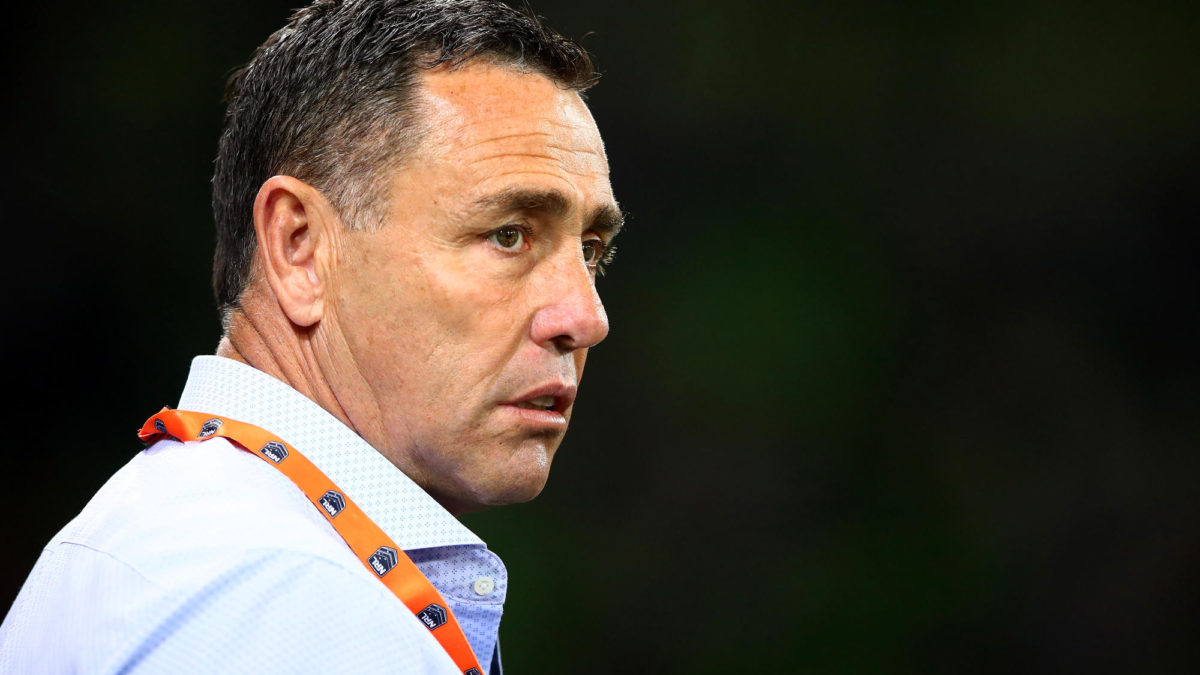From swift kicks to the alluring tinny ring of a dangerous sword swing, soundscapes are one of the crucial vital construction blocks of significant tv, particularly that of Netflix‘s Blue Eye Samurai. The grownup animated sequence follows Mizu (Mayra Erskine), a tender mixed-race warrior pushed by way of revenge as she lives as an outcast in Edo-period Japan. Her distinctive blue eyes characterize her as an interloper in Japan, as they’ve lengthy since closed their borders to overseas invaders, along with her gender combating her from legally in quest of revenge on those that shun her.
In July, Blue Eye Samurai garnered two Emmy nominations for Remarkable Animated Program and Remarkable Sound Modifying for a Comedy or Drama Sequence (Part-Hour) and Animation for Episode 6, “All Evil Desires and Offended Phrases.” The nominated sound enhancing duo Myron Nettinga and Paulette Lifton communicate to Closing date about the entire laborious paintings that is going into the layers of creating compelling and emotional turns befitting of a vengeful ronin.
DEADLINE: Sound blending and enhancing must no longer be perplexed with composing. Within the context of the sequence, how would you give an explanation for your function for the parents at house?
PAULETTE LIFTON: Smartly, there’s enhancing and there’s blending. So, tune is a part of the blending procedure. There’s additionally a tune editor, so there may be some editorial in tune who [preside] over sound results, discussion, Foley and ADR. So, there’s numerous various kinds of parts that must be edited. What sound enhancing does is we put all of those parts in combination and so they get prepped and despatched to the mixer.

Maya Erskine as Mizu in Blue Eye Samurai
Netflix
MYRON NETTINGA: The wonderful thing about animation, particularly, which isn’t the same as dwell motion, is that it’s an absolutely clean palette. There is not any sound. So, the entire means from the voice recordings that they do, then the animated voices and stuff, and that is available in, however then it’s your global to construct. And in this explicit display, they sought after to way it like a live-action. They didn’t need it to sound like your conventional animation. They in point of fact sought after the whole lot to be grounded. So as to add extra about what we do, we’ve got most of these parts to carry to the desk to make the display sound like genuine existence. So, we’ve got a Foley workforce that we use that does the entire toes and the entire other props and other dealing with of items and stuff, after which augmentation of one of the vital pieces that possibly they are able to accessory, just like the creaking of a horse carriage.
After which you have got the sound editorial that creates such things as atmospheres like winds and tones and whatnot to present it that real-life really feel, or even the sophisticated actions of characters like the sensation of ways material would transfer. Every scene has demanding situations, too. There’s like 8 demanding situations on this episode, and each and every scene has its personal pacing in regard to getting during the problem. And so, we’d get started out with an actual calm [sound] after which the sound of simply footsteps within the snow and the sea possibly within the distance. Then Mizu hits the primary grate, and it will get a little bit intense and extra intense than you most likely be expecting in genuine existence, but it surely nonetheless seems like an actual sound.
DEADLINE: How did you return on board Blue Eye Samurai?
NETTINGA: David Farley from Netflix reached out to us. They wanted for us to come back in and lend a hand see the display to its finish, so we inherited it, and our task used to be to take it to this subsequent degree roughly.
LIFTON: That is our 3rd animated sequence with Netflix. Myron’s uniqueness is that he labored at the Kill Invoice films. And prefer that, the sword is a personality on this TV sequence as neatly. In order that used to be some of the issues that used to be sexy to the workforce as neatly, and Netflix knew how neatly Myron may just navigate difficult subject material. However he’s at all times up for the problem as a result of he at all times delivers what purchasers need.
NETTINGA: We adore a problem, and we adore animation.
DEADLINE: What does the collaboration procedure seem like between you and Amie Doherty, the composer, and the sequence creators Amber Noizumi and Michael Inexperienced?
NETTINGA: It used to be distinctive. The way in which we way doing displays is most definitely a little bit extra distinctive than most of the people aren’t used to. In most cases, what occurs is you rent a valid workforce that you simply’re pleased with; they get your lower of the movie and TV display, after which they cross off and do the enhancing. It’s most commonly a secretive procedure, after which they simply do the item and display up and also you get no matter you get on the finish. Amie Doherty, who’s only a grasp at her craft, approached it like a live-action, however she’s a grasp, and the way in which [the team] did such a lot of particular issues with this display, we would have liked to ensure we have been assembly that degree at the sound finish. So, what we did used to be we agreed in this way the place we do our conventional recognizing, and we cross away and we begin operating on it. After which what occurs is, Amy, whilst she’s operating at the ranking, my guys, we’ve got the entire designers and stuff, we’ll all are available in and get started operating the discussion first and getting the entire therapies executed for that. It sounds very fundamental, however you need little therapies right here and there of various such things as a cave as opposed to out of doors echoes and stuff. We get all that dialed in, after which I am getting the fabrics and backgrounds from my sound workforce. I paintings all of it into the place I were given a mixture dialed in [the cut] in right here with out tune.

Myron Nettinga and Paulette Lifton
Myron Nettinga and Paulette Lifton
Then the tune is available in, so I do know what I’m taking note of. And the tune is simply incredible, and you need to you’ll want to save most of these just right parts of each and every factor. And so, I get started operating all of it in combination, and I’ll to find those parts within the tune that provides us a just right momentum and simply see how I will be able to use positive parts in combination. So, as I blend, I haven’t sat with Michael in any respect but, however I’ll ship him a preview blend once I end. So, he’ll ship me notes again, after which I’ll undergo and do some other model and ship it again to him once more till he says, “Nice.” Then we cross on a mixture level for 3 days with him and the whole lot is dialed in, so now we get to play and on account of that, it’s so a laugh. I imply, it’s a large number of paintings, however we’re very intense about shaping each little factor in order that there’s no stone that is going unturned.
LIFTON: I’ll upload a little bit one thing in regards to the tune, too, as a result of I in point of fact really feel that the usage of those parts that mix this hardcore rock and culturally suitable tune, and I like the truth they offer such a lot recognize to the Eastern tradition of this program. I in point of fact assume it elevates it. You at all times really feel like even though you carry this contemporary tune in, you’re nonetheless feeling like they’re in point of fact doing the whole lot as an homage.
NETTINGA: What used to be additionally in point of fact incredible in regards to the tune is that Amie and the tune editor Iko Kagasoff, I’d be in a mixture or doing pre-mix stuff, and so they’d be like, “Hello, that sound, can I take that and put it right here [in the music]” or I were given to be like, “Let me lose this drum hit proper right here as it’s roughly interfering.” They’re so collaborative with that.
LIFTON: It used to be in point of fact actually distinctive in how collaborative the tune is on this display as a result of I feel we simply made a in point of fact nice cohesive workforce, and everyone had their eye at the prize, and no person used to be like, “I must be the boss.” Everyone in point of fact used to be like, “Let’s simply make the most productive factor we will be able to perhaps make.”
DEADLINE: You point out textures during this interview. Are you able to shed a little bit extra gentle on what that suggests for the side of the display?
NETTINGA: First, I’d like to mention, a key a part of that is the sensibilities we’ve got received over time. If I had executed this challenge 5 years into my profession, there’s no means it might have pop out like this. And the opposite component is that what’s in point of fact key in making an individual be excellent at the ones textures or sounds isn’t such a lot the precise, “Hello, what is that this particular factor you need?” It’s extra of, “OK, what’s the feeling you need, and what’s this?” And so, we discovered to interpret. I’ve to mention that the closing film I did ahead of I went full-time blending for those closing 15 years used to be a film I did with Robert Towne. For this film, he would describe the whole lot as one thing grand, like fish feeding underwater is what he sought after runners operating across the monitor to sound like. And I needed to interpret what I used to be going to do for that. I advised the manager on the time, “Don’t concern, I were given it. I do know what to do right here.” And so, you get a hold of those concepts, and it’s like, as an example, the sword in Blue Eye Samurai used to be described as a personality. It used to be a personality, and it used to be a Kill Invoice reference. There used to be this nice vocabulary of the sword. What we would have liked to do in that is that we inherited a few of this language already, however we would have liked to present it extra of an intent. The sword needed to have intent on what [moves] Mizu used to be doing. She’s on a quest, and that sword is an extension of her intent. Every now and then it used to be only a, “I’m right here” form of presence, and it’s were given a extra harmonic roughly gel to it. And at different occasions, it used to be like we’re about to enter assault mode, and what does that sword do? After which, in a battle, what do you do with it? There have been all other little approaches, and what we did with the ones sounds to spotlight that intent of what Michael sought after, we have been ready to hone that during bringing all the ones parts into this texture and harmonics that in point of fact introduced that house.
DEADLINE: Sound performs a significant function in distinguishing and figuring out positive environments. What sort of topics or different references do you be mindful?
NETTINGA: Sam Hayward, our sound dressmaker, Andrew Miller, Jared Dwyer and Johanna Turner made a super sound workforce. They in point of fact did some heavy lifting on episode 6 particularly.
LIFTON: So, we might do a recognizing consultation and take notes with Michael, and every so often Amber can be there as neatly. And we get what their purpose used to be and what they sought after [an environment] to really feel like. I feel they have been extra in what they sought after it to sound like versus what they didn’t need it to sound like. They have been just right at describing a large number of emotional [beats]. To me, theme in sound approach extra just like the emotional feeling of what a [filmmaker] is short of. As an example, within the episode, there are zombies. When you’ve got the zombies, the place clearly, you don’t know the zombies are there to start with, there’s that trepidatious feeling like a horror movie.
NETTINGA: Precisely, that’s a super instance. It’s like impressions. That scene brings in this complete dynamic pacing we mentioned previous when Mizu first hits that scene as a result of she’s in a psychedelic state. After which she hits the bottom, and the whole lot turns out like she’s in an ordinary area, however she isn’t. There are some eerie tones. Then she walks, and there’s a few characters in jail cells and all that after which issues get a little bit bizarre, just like the eyes waft or one thing like that. After which the large is available in, issues get intense, after which the doorways open and it all is going hog wild. And Micheal used to be like, “You realize what to do, that is what I wish to succeed in. Let me see what you do.”
Each and every sound of the background by no means sits nonetheless. The whole lot at all times has a continuing motion to it that’s transferring round you to both give off uneasiness every now and then on this episode. Different occasions, when Mizu is going out into the courtyard with the lure doorways ahead of she battles most of these squaddies within the courtroom, it’s only a great silent wind. It’s all primarily based actually and it’s quiet ahead of the typhoon hits. Then, that first lure door is going by itself, issues get a little bit extra intense, after which she comes to a decision to take off. Song kicks in tools, however the setting is in the whole lot. So, issues in that episode by no means sat nonetheless, it used to be at all times a type of undulation of the ambience round you.

Blue Eye Samurai
Netflix
DEADLINE: That seems like extremely difficult paintings to assume up all the ones sounds and observe them.
NETTINGA: OK, something I’ve to mention, since we’re speaking about a large number of issues right here which are very time-consuming and we need to experiment, it takes time to get issues proper and stuff like that. I’ve to mention that what Netflix gave us in fortify used to be actually vital with the intention to succeed in it as a result of budgets are at all times a key a part of the sport, and once I checked out that stuff, particularly episode six, I used to be like, “Oh whats up, that is moderately an endeavor. That is what we want.” And Netflix gave me what I wished and we have been ready to reach this on account of all of that. Such a lot of occasions, there’s this short-sightedness of, “Oh, we simplest have this a lot left within the price range.” And that’s all you get. However Netflix used to be no longer that means. They didn’t take that way with us, Michael, Amber, or Jane [Wu, director-producer], they helped us with what we had to do. If I wished two hours to paintings on a combat scene or one thing, they gave it to me, and that’s in point of fact particular. Everybody concerned in point of fact used to be allowed to do their factor.
LIFTON: You realize what’s fascinating? I’ve a few Emmys for animation sound. However the ones are Daylight Emmys, as a result of that’s what’s customary. So now there’s such a lot grownup animation. Our class contains live-action displays. We’re the one animated display on this class. So, the quantity of labor, and I’m no longer disparaging anyone’s paintings on any of the opposite displays as a result of they’re all superb displays, and everyone is so gifted. However the quantity of labor concerned to create the sound on this display is, by way of some distance—
NETTINGA: A dream challenge, but it surely’s additionally a large number of heavy lifting.
LIFTON: It’s a large number of heavy lifting. But when we have a look at the rationale the display used to be made, the foundation tale at the back of it, and the way it broke a large number of other limitations, I feel on many alternative ranges, it made our enhancing and the issues that we did and the stuff that we put into it much more vital for us as neatly. So, it’s no longer simply some other display for us.
[This interview has been edited for length and clarity]









